Yokai (Yōkai): Mysterious Interdimensional Force With Odd Abilities In Japanese Mythology
A. Sutherland - AncientPages. com - There is a mysterious force that in Japan is known as Yokai (“Yōkai”).
According to ancient Japanese beliefs, Yōkai (in Chinese: 'kanji', which means “strangeness, mystery, or suspicion”) are weird creatures that dwell in the borderlands and in spaces, which are located “in-between”.
The Ground Spider , October 1892. From the Thirty-six Ghosts series. 9.25" x 14.25". The print depicts Minamoto no Yorimitsu attacking a ground spider monster. Image credit: Tsukioka Yoshitoshi - Art Gallery NSW - Public Domain
The belief in Yōkai was mentioned in “Shoku Nihongi” text dated to the eighth-century and still, this ancient belief is alive in the Japanese modern society.
Yokai can take many different forms and are mostly associated with villages, old abandoned towns, deserted mountain passes.
Yōkai does not belong to anybody. They just exist, appear usually at twilight, when our surroundings look strange and are difficult to recognize. They haunt bridges and tunnels, entranceways, and lurk and disturb at crossroads and thresholds; they are elsewhere, changing their forms and places.
Research suggests that this creature dwells in the contact zone between fact and fiction, between belief and doubt. Yōkai is the common name for monsters, transformed humans and animals, demons, spirits, or goblin.
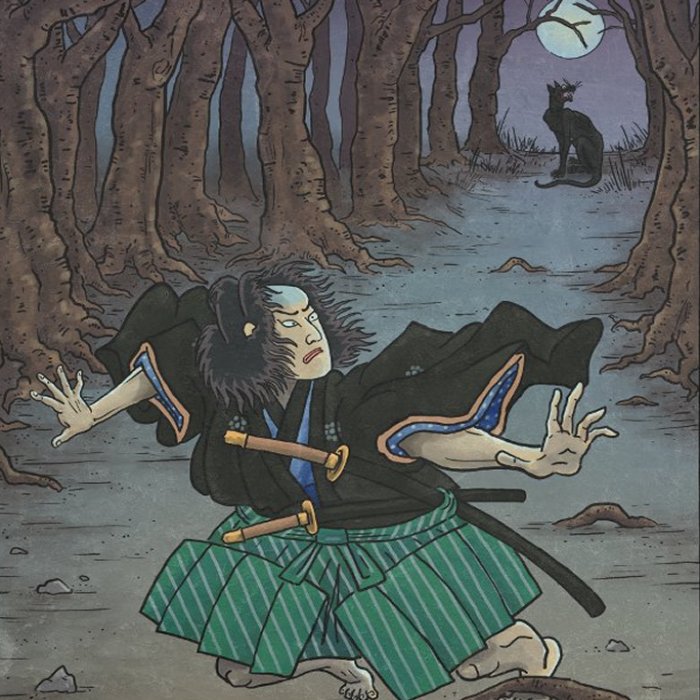
They haunt bridges and tunnels, entranceways, and lurk and disturb at crossroads and thresholds; they are elsewhere, changing their forms and places. Image credit: Mathew Meyers Yokai.com
People say they are simply monsters. Their nature varies from benign to mischievous to seriously scary.
In his book "The Book of Yokai: Mysterious Creatures of Japanese Folklore", which is based on his long study of Yokai, M.D. Foster, mentions an intriguing and unpleasant story from "A Collection of Tales from Uji, c. 1220" -m (Uji shūi monogatari).
This story tells of "a monk traveling alone through the province of Settsu, located in the vicinity of the present-day city of Osaka.
Coming upon a deserted temple, he decides to settle in for the night and begins chanting an incantation to the guardian deity Fudō, who battles evil with his immovable faith and compassion.
But suddenly, “a crowd some hundred strong came surging into the temple, every one of them with a torch in his hand.
When they got close, he saw that they were fantastically weird creatures, not men at all; there were all sorts of them, some with only one eye, some with horns, while their heads were more terrible than words can describe.”
The monk spends a terrifying night, surviving only because Fudō protects him. After the gang of oni finally leaves and the sun rises, the monk is shocked to discover that there is actually no temple at all and he cannot even find the path that brought him there.
Eventually, he meets some travelers who inform him that he is in the province of Hizen— hundreds of miles from Settsu!"
It is worth mentioning that "oni" is a term usually associated with danger and fear; this term is generally translated today as “demon” or “ogre.”
During the Heian period, "oni" meant a nasty and threatening creature, that frequently appeared in human-like form. "Oni" has enormous evil power and when engaged in the fight, these terrible creatures can reattach body parts they lose in fights.
They crush the enemy with one blow from their spiked iron club (kanabo; they can also fly, change form at will and cause diseases, insanity, and death. Their favorite food is human flesh.
Were these terrible "oni" creatures responsible for teleportation of the monk to another, very distant location? What did really happen to him?
Written by – A. Sutherland AncientPages.com Staff Writer
Copyright © AncientPages.com All rights reserved. This material may not be published, broadcast, rewritten or redistributed in whole or part without the express written permission of AncientPages.com
Expand for referencesReferences:
Foster, M. D. The Book of Yokai: Mysterious Creatures of Japanese
More From Ancient Pages
-
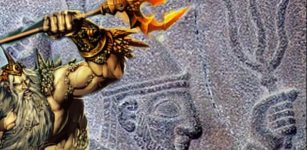 Trident: Powerful Religious Symbol Found In Many Ancient Cultures
Ancient Symbols | Dec 4, 2019
Trident: Powerful Religious Symbol Found In Many Ancient Cultures
Ancient Symbols | Dec 4, 2019 -
 Beads Show European Trade In African Interior Used Indigenous Routes
Archaeology | Sep 17, 2022
Beads Show European Trade In African Interior Used Indigenous Routes
Archaeology | Sep 17, 2022 -
 Sacred City Of Caral – Site Of The Oldest Known Civilization In The Americas
Civilizations | Aug 28, 2018
Sacred City Of Caral – Site Of The Oldest Known Civilization In The Americas
Civilizations | Aug 28, 2018 -
 On This Day In History: Gerardus Mercator Famous Mapmaker Of All Time Died – On Dec 2, 1594
News | Dec 2, 2016
On This Day In History: Gerardus Mercator Famous Mapmaker Of All Time Died – On Dec 2, 1594
News | Dec 2, 2016 -
 Medieval Manuscript Reveals Surprising Discovery Of Star Wars Master Yoda & Shocking Monsters
Artifacts | Apr 27, 2015
Medieval Manuscript Reveals Surprising Discovery Of Star Wars Master Yoda & Shocking Monsters
Artifacts | Apr 27, 2015 -
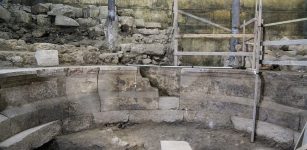 Roman Theater Unearthed After 1,700 Years Near Western Wall In Jerusalem
Archaeology | Oct 19, 2017
Roman Theater Unearthed After 1,700 Years Near Western Wall In Jerusalem
Archaeology | Oct 19, 2017 -
 Long-Lost Viking Waterway Leading To Orkney, The Great Norse Empire – Discovered
Archaeology | Aug 5, 2020
Long-Lost Viking Waterway Leading To Orkney, The Great Norse Empire – Discovered
Archaeology | Aug 5, 2020 -
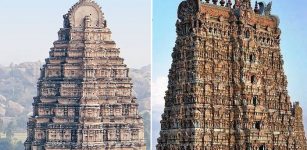 Vimana Temples – Architectural Marvel Of India
Civilizations | Dec 31, 2018
Vimana Temples – Architectural Marvel Of India
Civilizations | Dec 31, 2018 -
 Why Were The Jews Exiled To Babylon?
Ancient History Facts | Jan 14, 2020
Why Were The Jews Exiled To Babylon?
Ancient History Facts | Jan 14, 2020 -
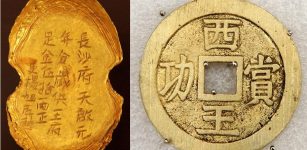 Ancient Legend Is Now Proven True: Sunken Treasure Of Gold And Silver Found
Archaeology | Mar 22, 2017
Ancient Legend Is Now Proven True: Sunken Treasure Of Gold And Silver Found
Archaeology | Mar 22, 2017 -
 Neolithic Monuments, Prehistoric Pits And Anglo-Saxon Cemetery Unearthed In England
Archaeology | Apr 19, 2016
Neolithic Monuments, Prehistoric Pits And Anglo-Saxon Cemetery Unearthed In England
Archaeology | Apr 19, 2016 -
 Naglfar Nail-Ship Carries Demonic Forces To Ragnarok In Norse Beliefs
Featured Stories | Aug 10, 2020
Naglfar Nail-Ship Carries Demonic Forces To Ragnarok In Norse Beliefs
Featured Stories | Aug 10, 2020 -
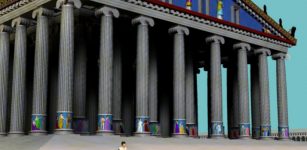 Herostratic Fame Relates To Herostratus Who Burned The Beautiful Temple Of Artemis To Become Famous
Ancient History Facts | Jan 6, 2017
Herostratic Fame Relates To Herostratus Who Burned The Beautiful Temple Of Artemis To Become Famous
Ancient History Facts | Jan 6, 2017 -
 Impressive Kaymakli Underground City – An Ancient Hiding Place
Featured Stories | Mar 3, 2016
Impressive Kaymakli Underground City – An Ancient Hiding Place
Featured Stories | Mar 3, 2016 -
 On This Day In History: Macbeth, King of Scots Killed At The Battle Of Lumphanan – On August 15, 1057
News | Aug 15, 2016
On This Day In History: Macbeth, King of Scots Killed At The Battle Of Lumphanan – On August 15, 1057
News | Aug 15, 2016 -
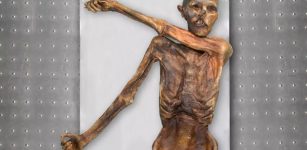 Ötzi Had Dark Skin, Bald Head And Anatolian Ancestry- DNA Reveals
Evolution | Aug 16, 2023
Ötzi Had Dark Skin, Bald Head And Anatolian Ancestry- DNA Reveals
Evolution | Aug 16, 2023 -
 Ancient Mystery Of The Tomb Of Tiryns – Burial Place For An Unknown Mycenaean Hero?
Featured Stories | Jan 11, 2021
Ancient Mystery Of The Tomb Of Tiryns – Burial Place For An Unknown Mycenaean Hero?
Featured Stories | Jan 11, 2021 -
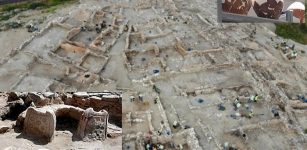 Anatolia’s Seyitömer Mound Was Inhabited In Bronze Age, Achaemenid, Hellenistic, And Roman Times
Archaeology | Aug 17, 2020
Anatolia’s Seyitömer Mound Was Inhabited In Bronze Age, Achaemenid, Hellenistic, And Roman Times
Archaeology | Aug 17, 2020 -
 Face Of Norwegian Boy Who Lived 8,000 Years Ago Reconstructed
Archaeology | Mar 16, 2023
Face Of Norwegian Boy Who Lived 8,000 Years Ago Reconstructed
Archaeology | Mar 16, 2023 -
 A 4.4 Million-Year-Old Hand Of ‘Ardi’ Has Some Clues On Humans’ Upright Walking
Fossils | Feb 25, 2021
A 4.4 Million-Year-Old Hand Of ‘Ardi’ Has Some Clues On Humans’ Upright Walking
Fossils | Feb 25, 2021


